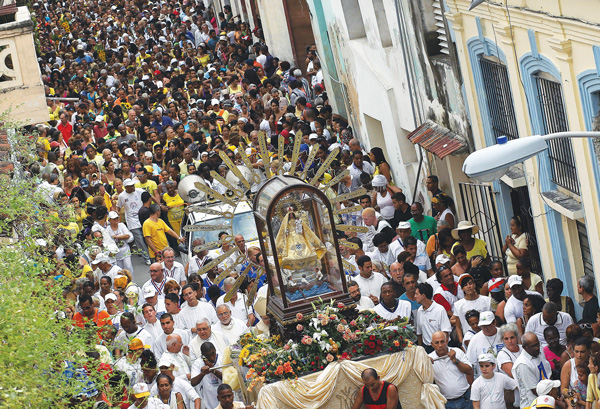By Rhina Guidos

WASHINGTON – As the Catholic Church opened the Second Vatican Council in 1962, addressing and changing the Church’s relationship with the modern world, the church on the island of Cuba was entering a period of mere survival.
Following the 1959 Cuban revolution, the government, which declared itself officially atheistic, seized properties that had served as the social and community centers of Catholic life, and a decades-long tension between the government and the Catholic Church was just beginning.
In “Small Communities: a Dawn of a New Way of Being Church,” issued by the Cuban Catholic bishops’ conference, church officials document – in carefully chosen language – difficulties, triumphs and modern-day challenges under communism.
The church in the second part of 20th century faced “a difficult time,” says the document, without saying why or what caused the difficult time. It says the church and parishes entered an epoch of “defensive survival and conservation.”
The document provides a glimpse of a church that, up until the 1950s, was thriving and greatly contributed to life on the island through its Catholic education system, including K-12 schools and universities, hospitals, orphanages, nursing homes and other institutions.
As tensions at the start of the revolution grew, those institutions and the properties where they operated were seized. The number of Catholic priests and other religious serving in Cuba became limited and greatly dwindled with the years. And the building of new churches was halted for five decades.
But in 1986, following what’s known as the National Cuban Ecclesiastical Meeting – a gathering of priests, religious and laity organized by the Cuban bishops – officials decided that instead of being on the defensive, the church in Cuba could focus on missionary work.
This brought about an “awakening” and a “new Pentecost” for the life of the church on the island, the document says. With battered church buildings and scarcity of church properties, the laity and others started carrying out the work in what are called “mission houses” – basically any space they could find. They included private homes or patios where people could meet to share the Gospel, or to organize the life and works of a parish: visiting the sick, tending to the poor.
“It’s what the Gospel calls all of us to do in one way or another,” said Father Juan Molina, director of the U.S. bishops’ Office for the Church in Latin America. “They are what I would call more like the ‘primitive church,’ where there were no resources and where (as a) persecuted church, they had to care for one another.”
The document says that church members, mainly the laity, decided to take a more active role in groups for youth, the elderly and retired. They became more involved in church organizations such as Caritas, establishing spaces where church members could help Cuban society learn about any number of subjects: languages, arts and crafts, small businesses, areas that are thriving in Cuba’s growing tourism sector.
“It wasn’t until about 1990, when the church in Cuba, seeing that it continued to live under communism, that they then decided to be a church under communism,” Father Molina said. “That it was going to try to engage … in this society, given all of the limitations that they were going to face. That is very clear, that they made that decision.”
Yet the number of “committed lay people is insufficient,” the document says, as many Catholics face greater work demands or leave the island.
